Hugo Proenca
Information Retrieval: Recent Advances and Beyond
Jan 20, 2023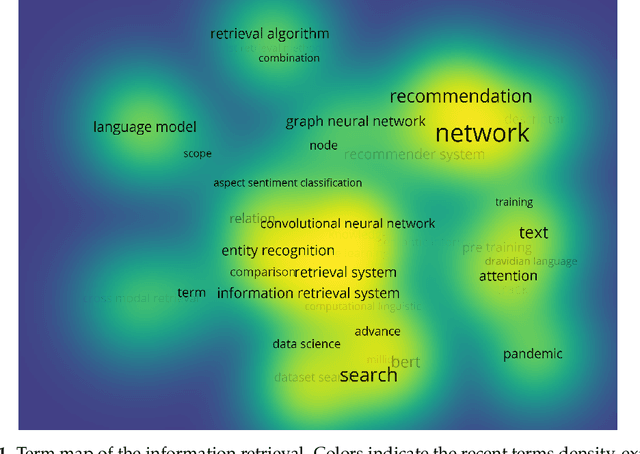
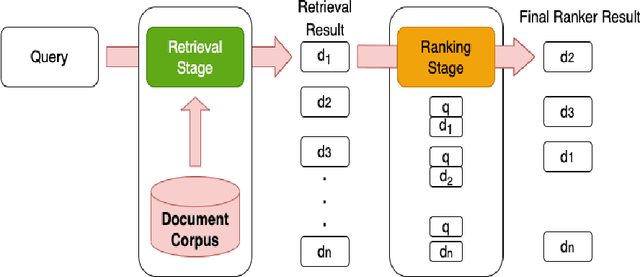
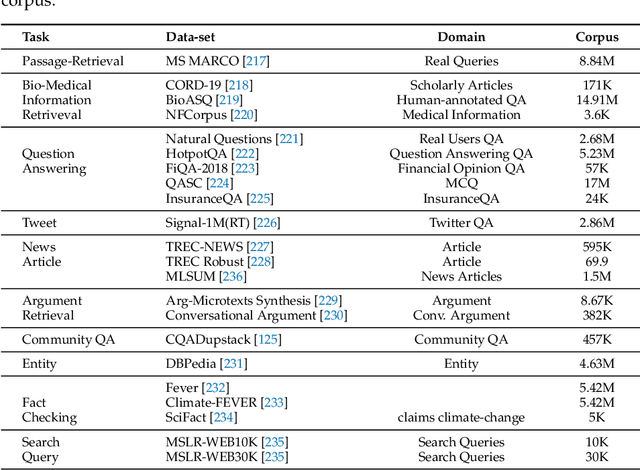
Abstract:In this paper, we provide a detailed overview of the models used for information retrieval in the first and second stages of the typical processing chain. We discuss the current state-of-the-art models, including methods based on terms, semantic retrieval, and neural. Additionally, we delve into the key topics related to the learning process of these models. This way, this survey offers a comprehensive understanding of the field and is of interest for for researchers and practitioners entering/working in the information retrieval domain.
Forensic Shoe-print Identification: A Brief Survey
Jan 05, 2019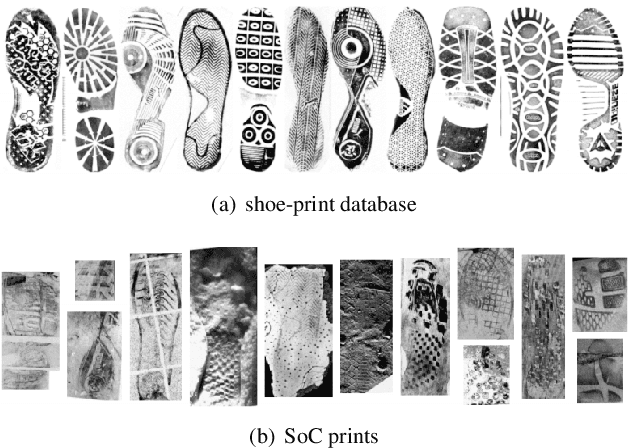
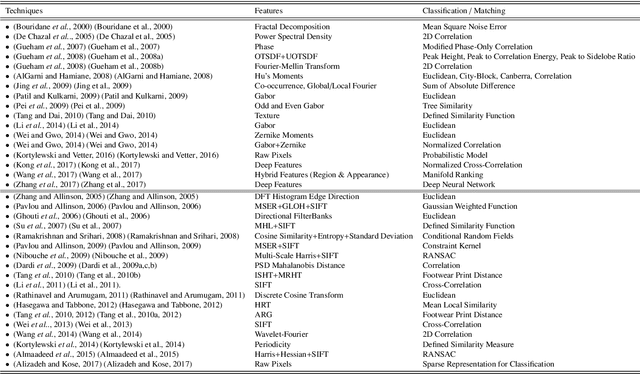
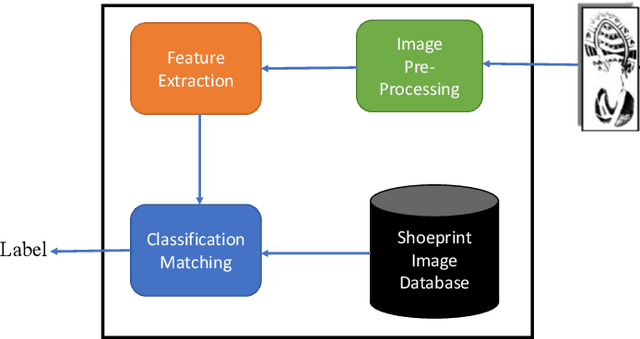
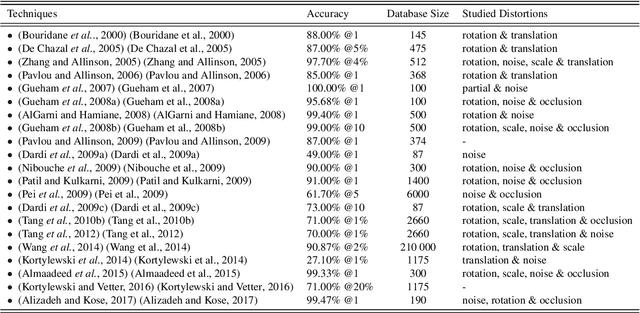
Abstract:As an advanced research topic in forensics science, automatic shoe-print identification has been extensively studied in the last two decades, since shoe marks are the clues most frequently left in a crime scene. Hence, these impressions provide a pertinent evidence for the proper progress of investigations in order to identify the potential criminals. The main goal of this survey is to provide a cohesive overview of the research carried out in forensic shoe-print identification and its basic background. Apart defining the problem and describing the phases that typically compose the processing chain of shoe-print identification, we provide a summary/comparison of the state-of-the-art approaches, in order to guide the neophyte and help to advance the research topic. This is done through introducing simple and basic taxonomies as well as summaries of the state-of-the-art performance. Lastly, we discuss the current open problems and challenges in this research topic, point out for promising directions in this field.
Robust Periocular Recognition By Fusing Sparse Representations of Color and Geometry Information
Sep 11, 2013

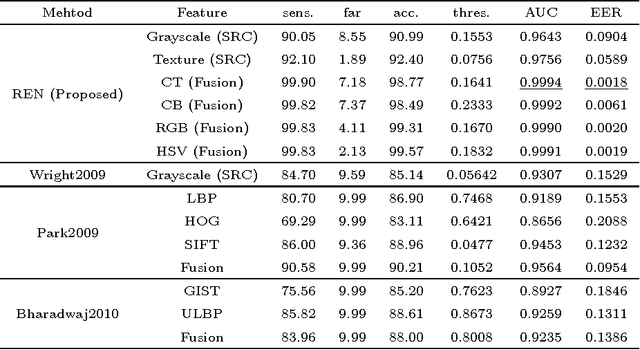

Abstract:In this paper, we propose a re-weighted elastic net (REN) model for biometric recognition. The new model is applied to data separated into geometric and color spatial components. The geometric information is extracted using a fast cartoon - texture decomposition model based on a dual formulation of the total variation norm allowing us to carry information about the overall geometry of images. Color components are defined using linear and nonlinear color spaces, namely the red-green-blue (RGB), chromaticity-brightness (CB) and hue-saturation-value (HSV). Next, according to a Bayesian fusion-scheme, sparse representations for classification purposes are obtained. The scheme is numerically solved using a gradient projection (GP) algorithm. In the empirical validation of the proposed model, we have chosen the periocular region, which is an emerging trait known for its robustness against low quality data. Our results were obtained in the publicly available UBIRIS.v2 data set and show consistent improvements in recognition effectiveness when compared to related state-of-the-art techniques.
Brain MRI Segmentation with Fast and Globally Convex Multiphase Active Contours
Aug 28, 2013
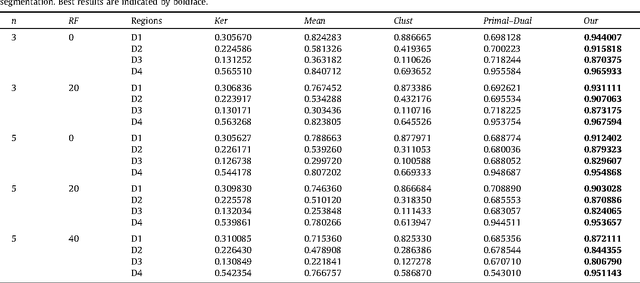
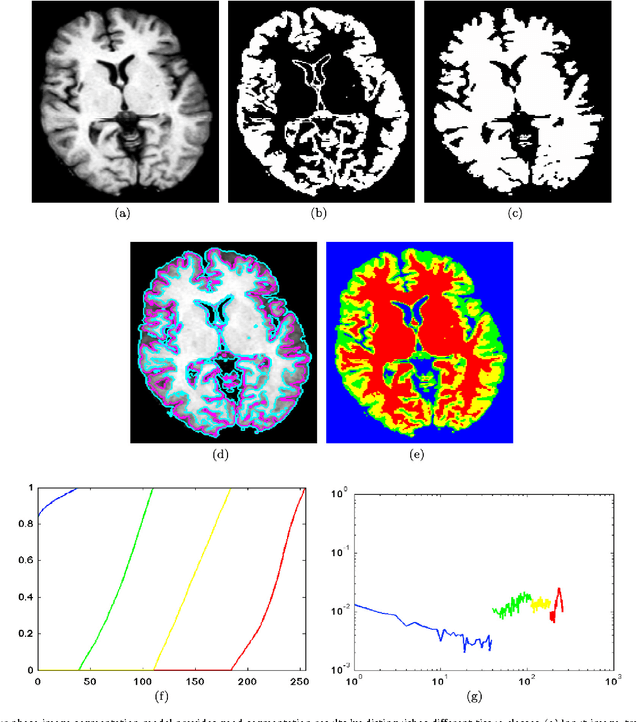
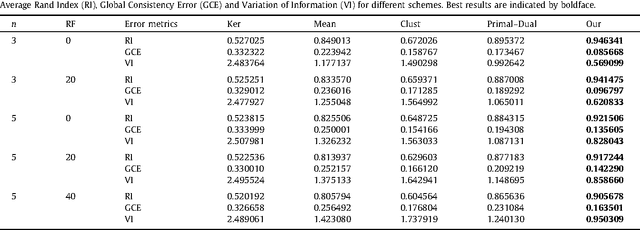
Abstract:Multiphase active contour based models are useful in identifying multiple regions with different characteristics such as the mean values of regions. This is relevant in brain magnetic resonance images (MRIs), allowing the differentiation of white matter against gray matter. We consider a well defined globally convex formulation of Vese and Chan multiphase active contour model for segmenting brain MRI images. A well-established theory and an efficient dual minimization scheme are thoroughly described which guarantees optimal solutions and provides stable segmentations. Moreover, under the dual minimization implementation our model perfectly describes disjoint regions by avoiding local minima solutions. Experimental results indicate that the proposed approach provides better accuracy than other related multiphase active contour algorithms even under severe noise, intensity inhomogeneities, and partial volume effects.
 Add to Chrome
Add to Chrome Add to Firefox
Add to Firefox Add to Edge
Add to Edge